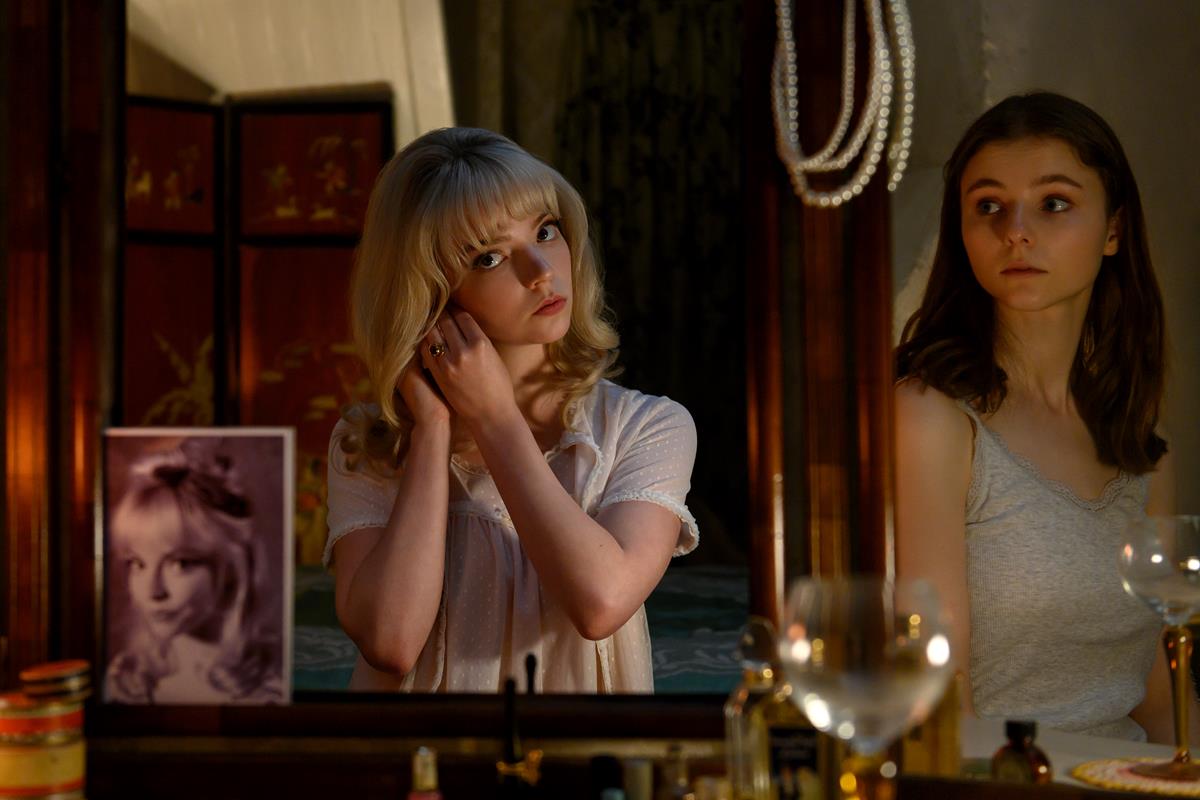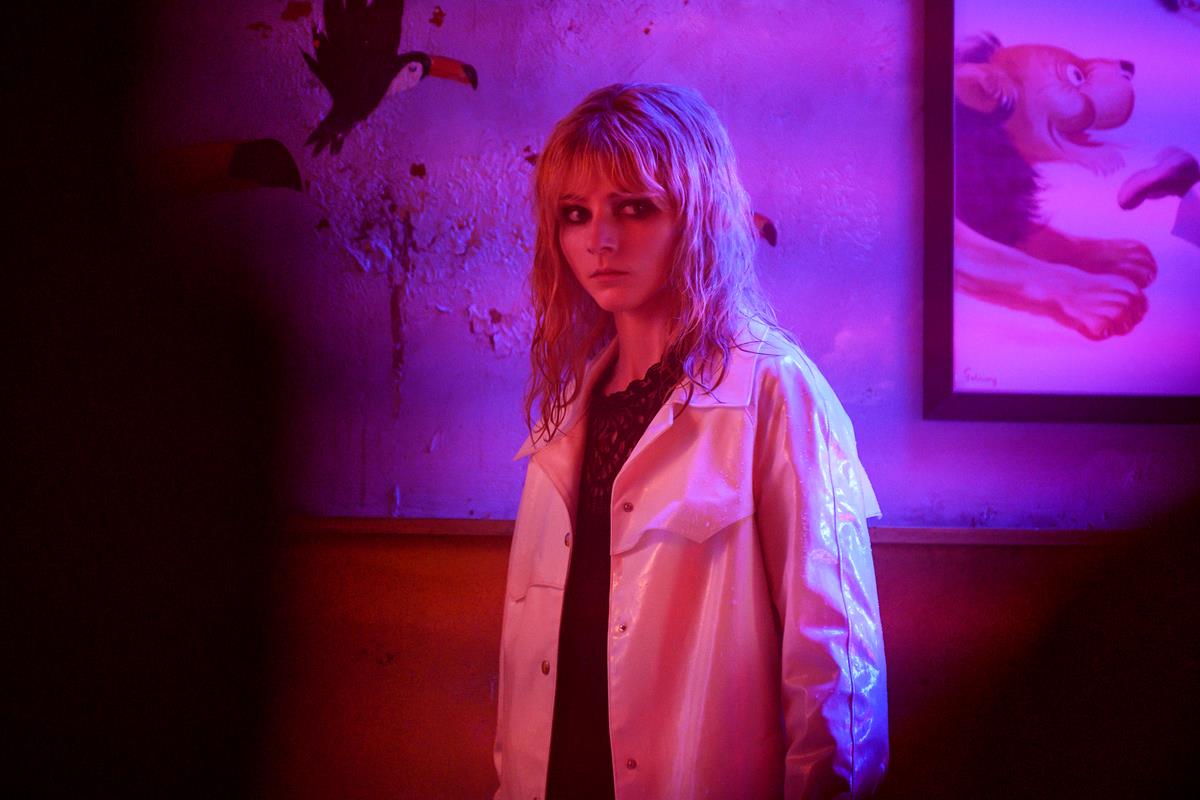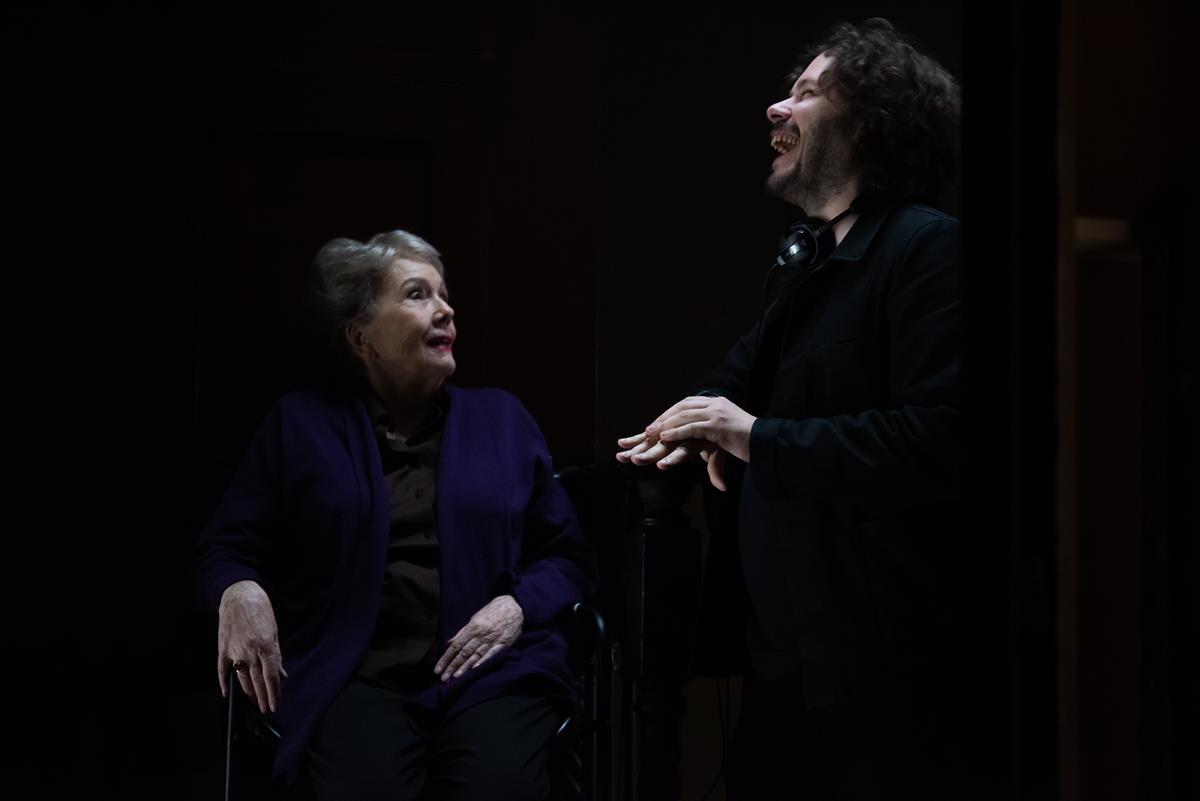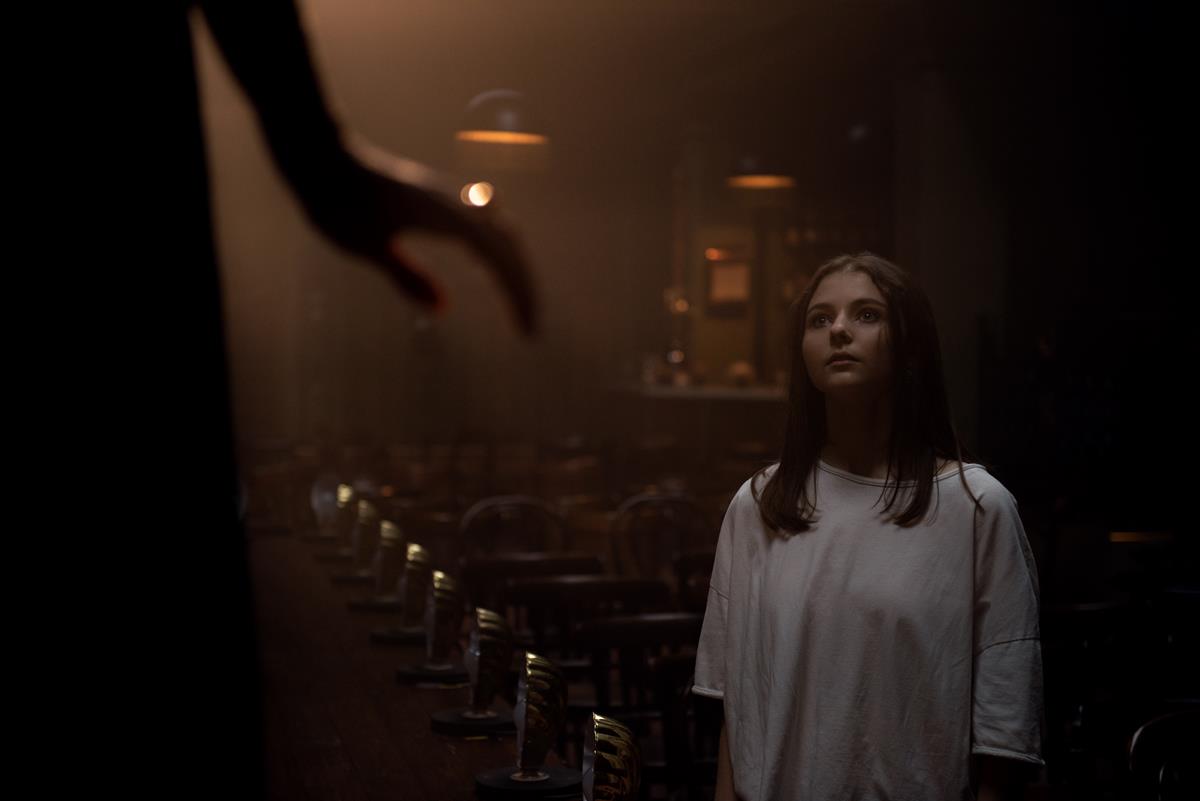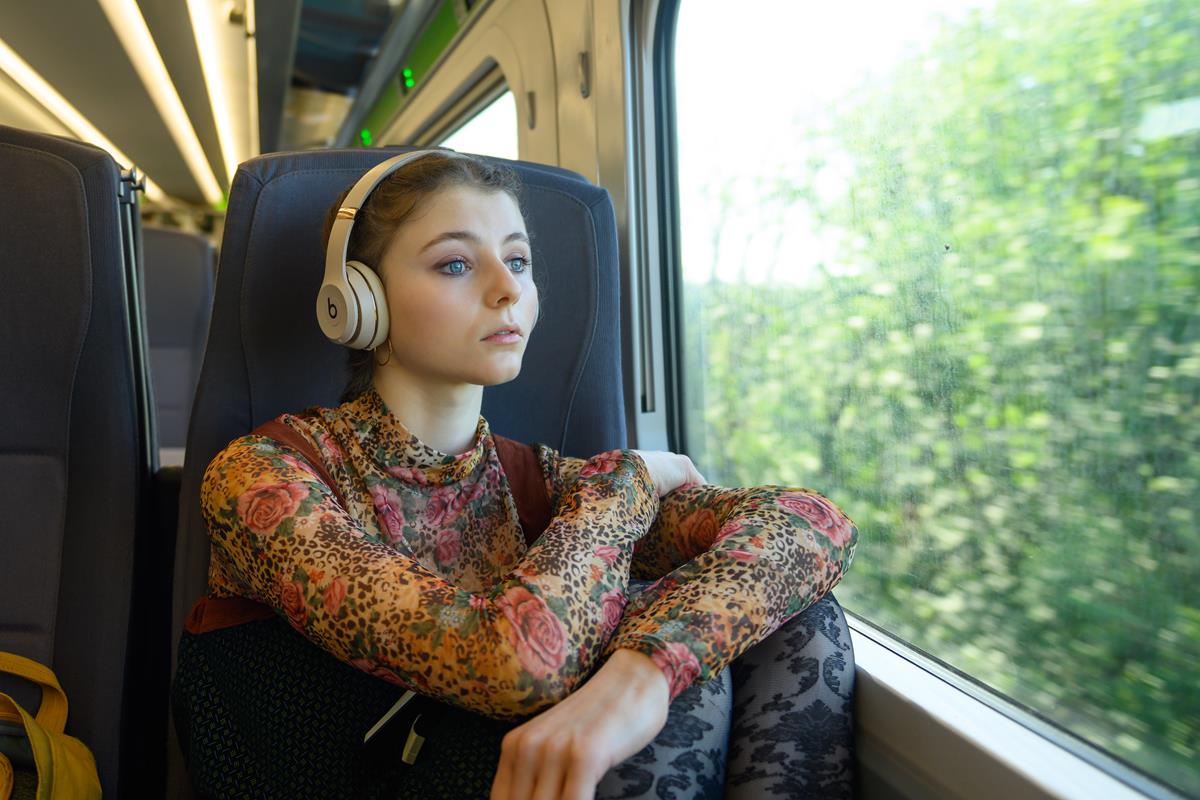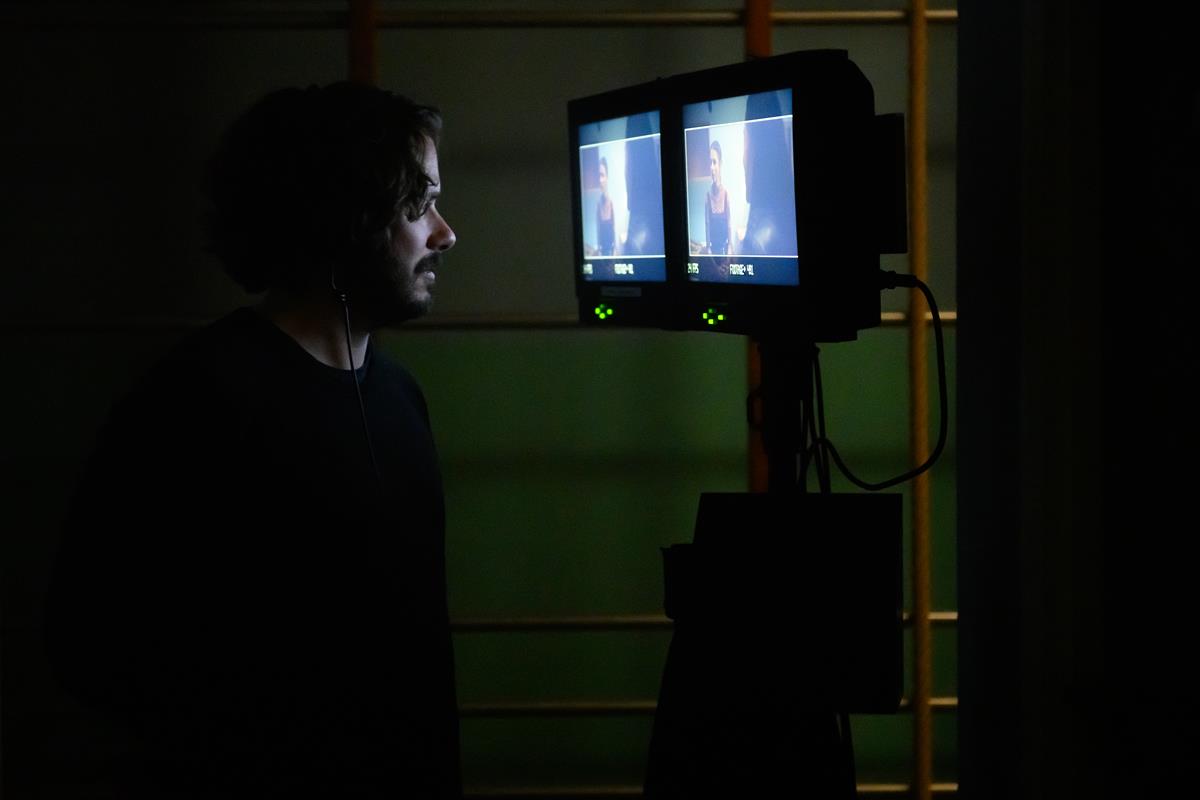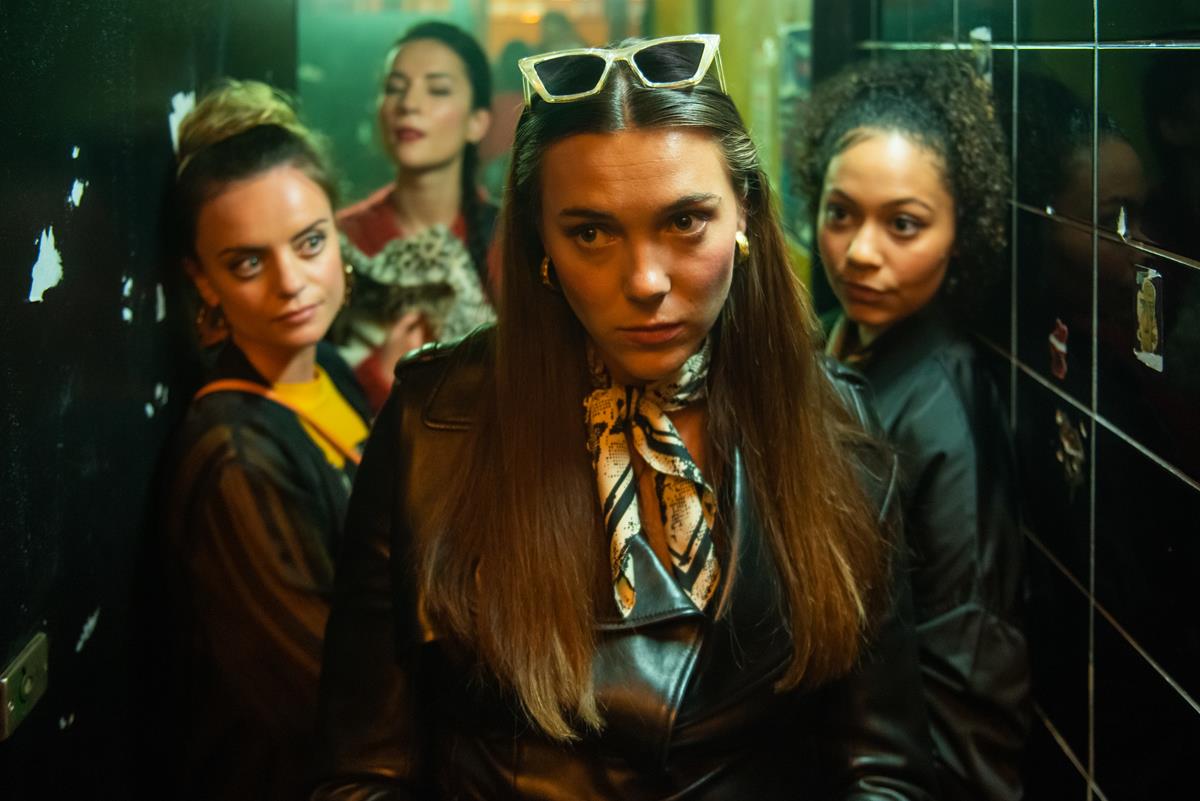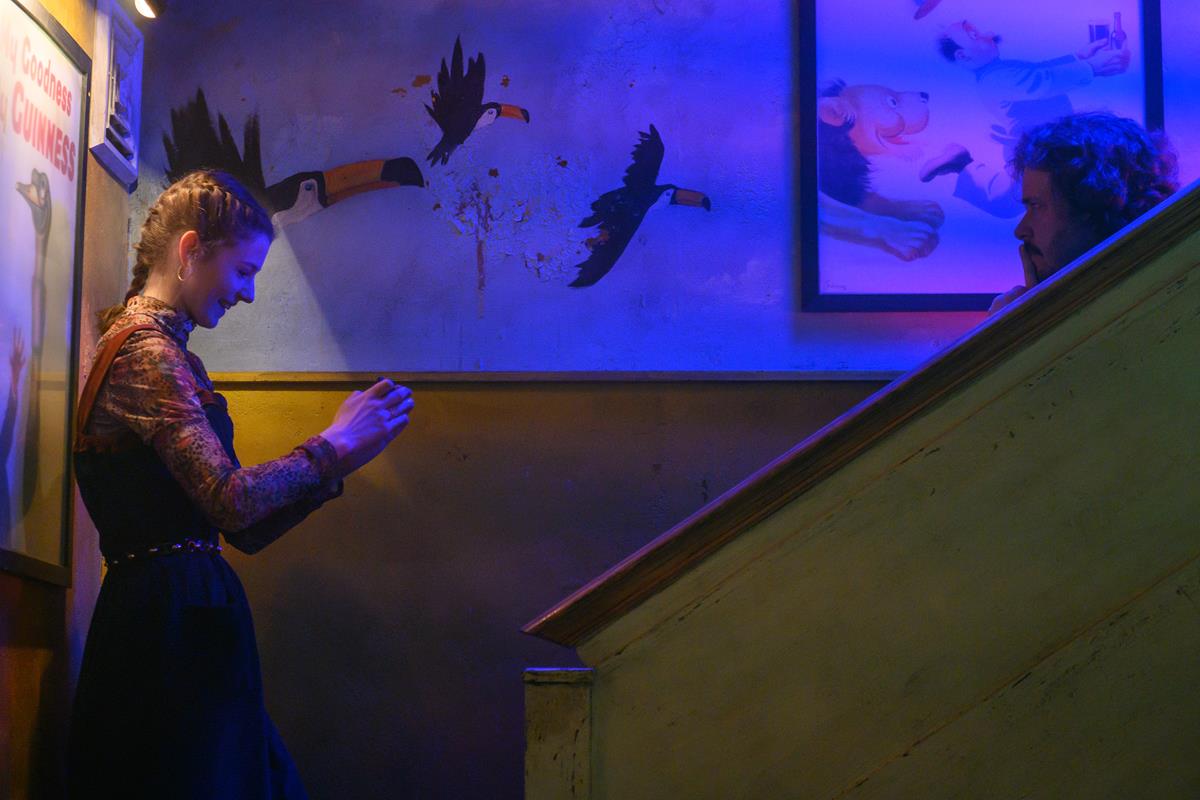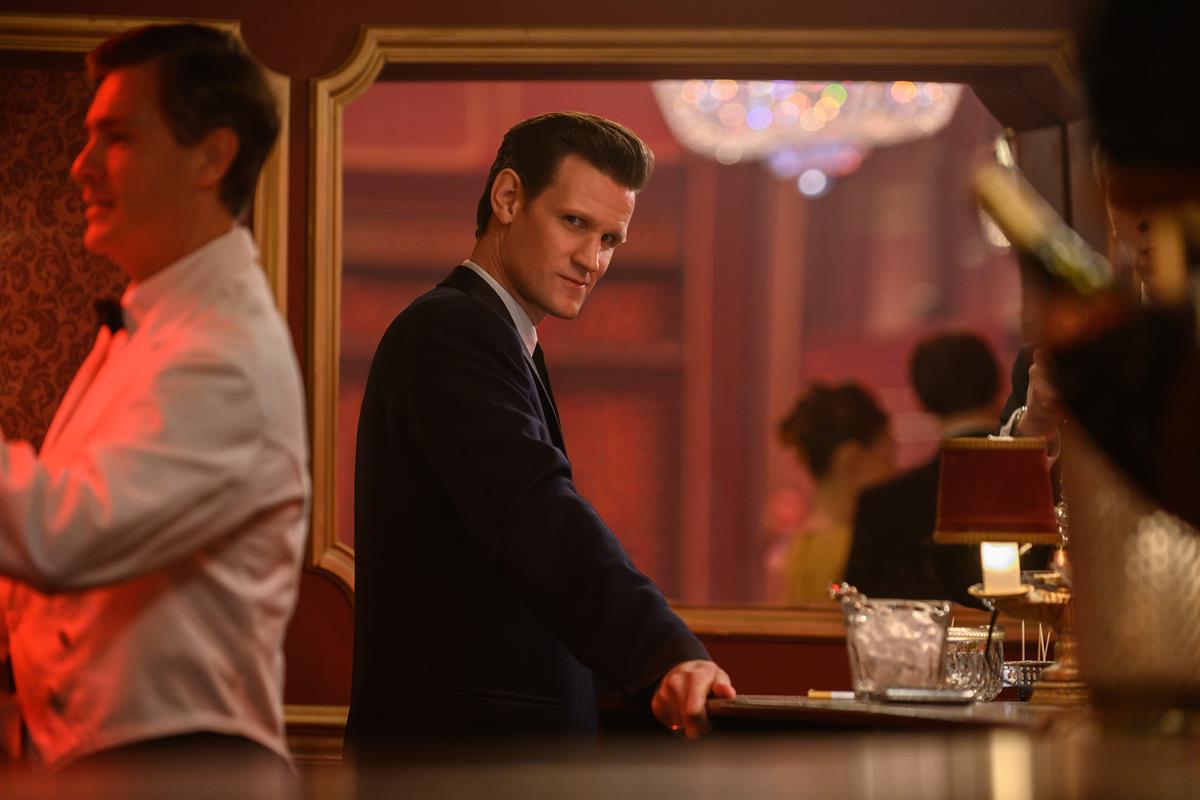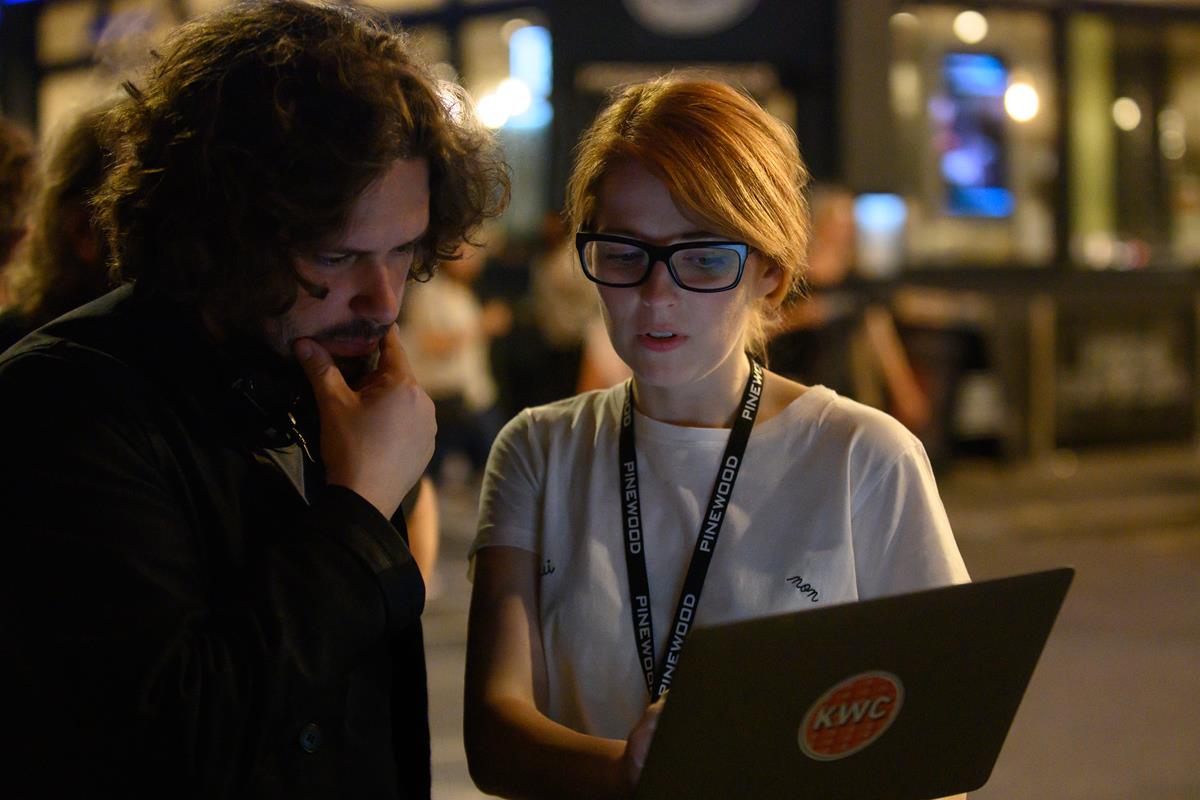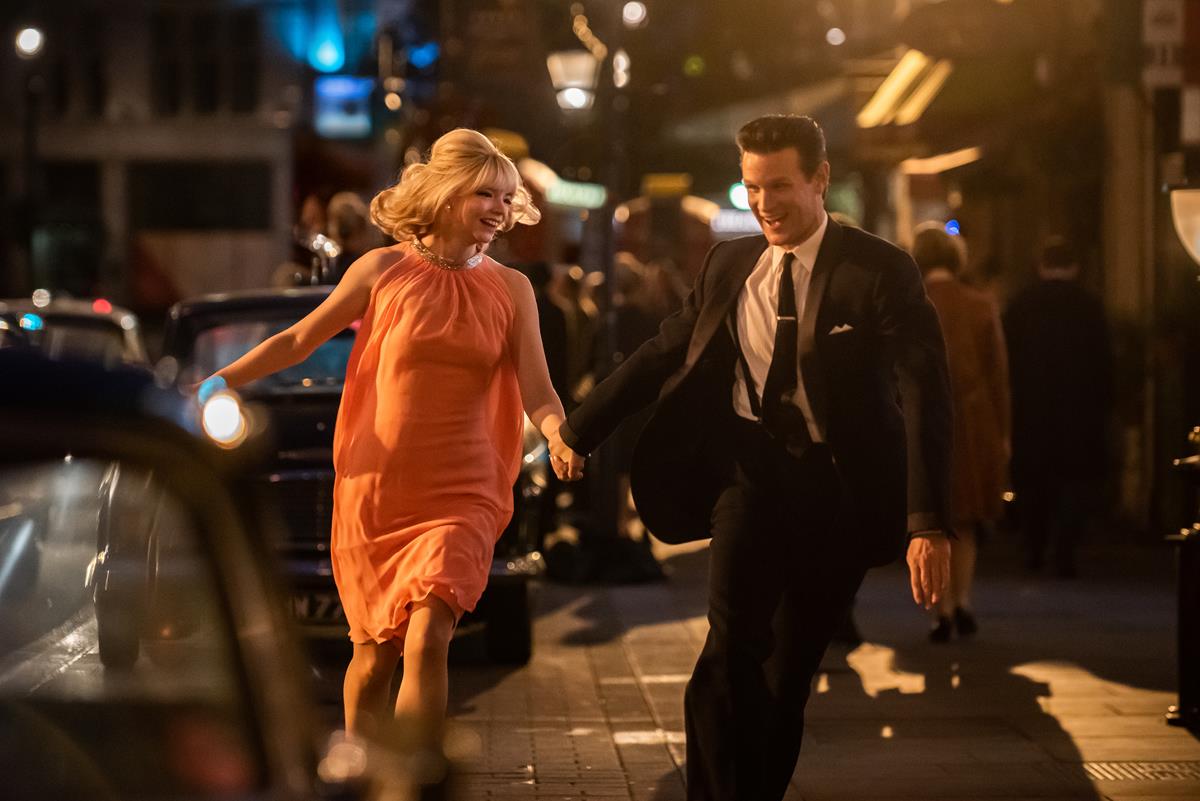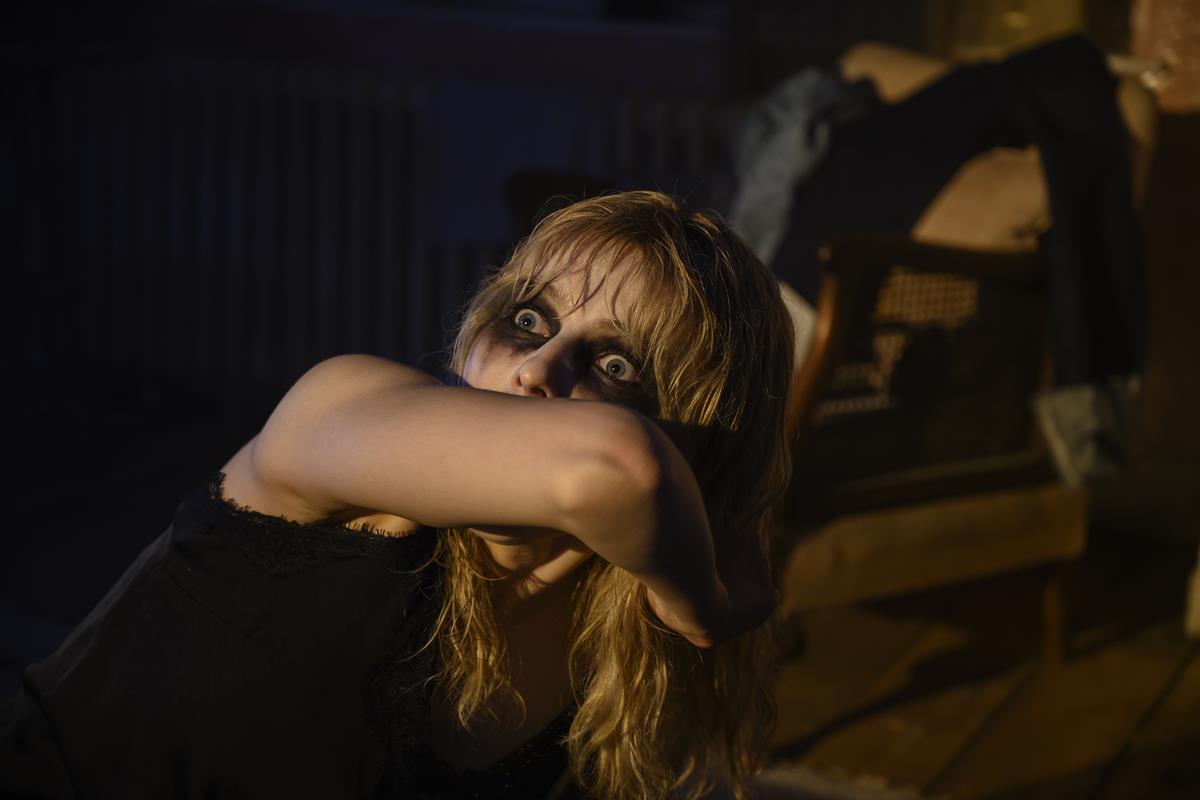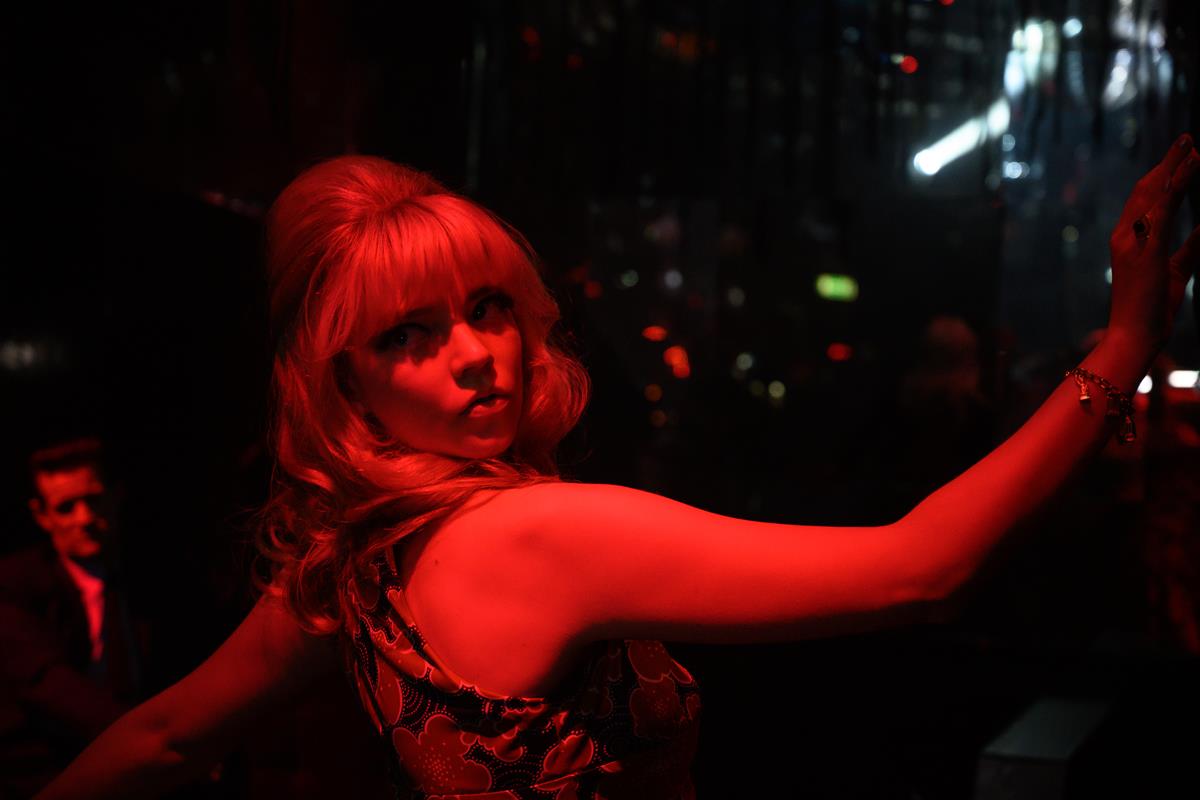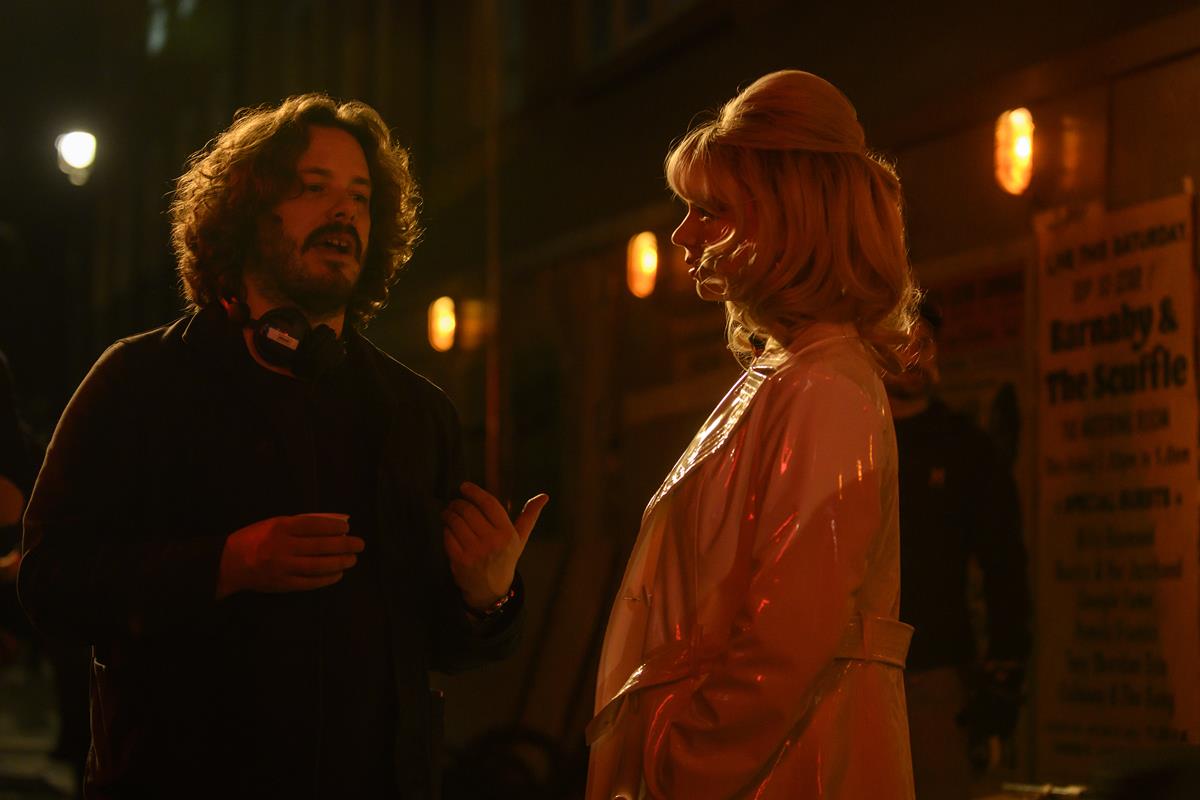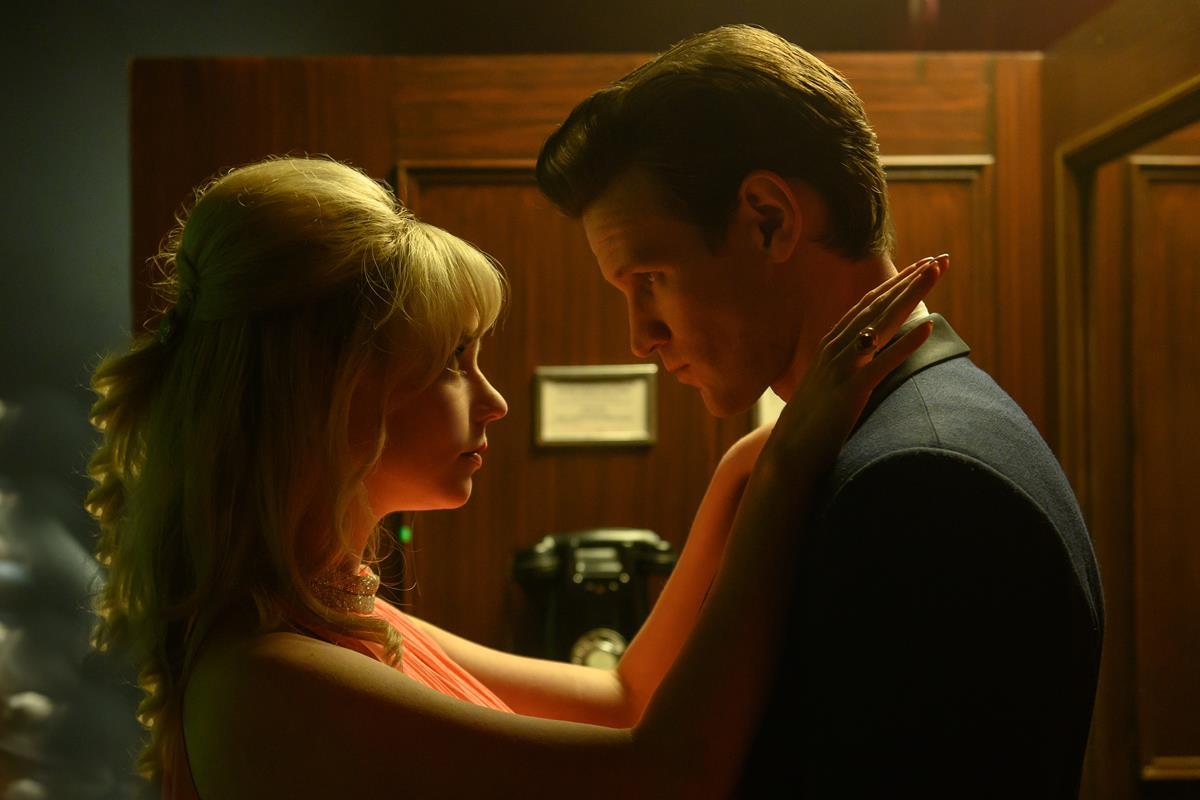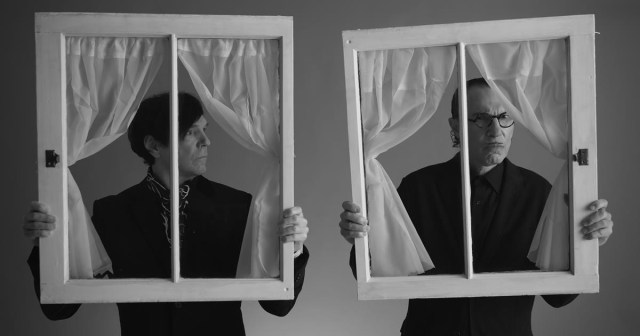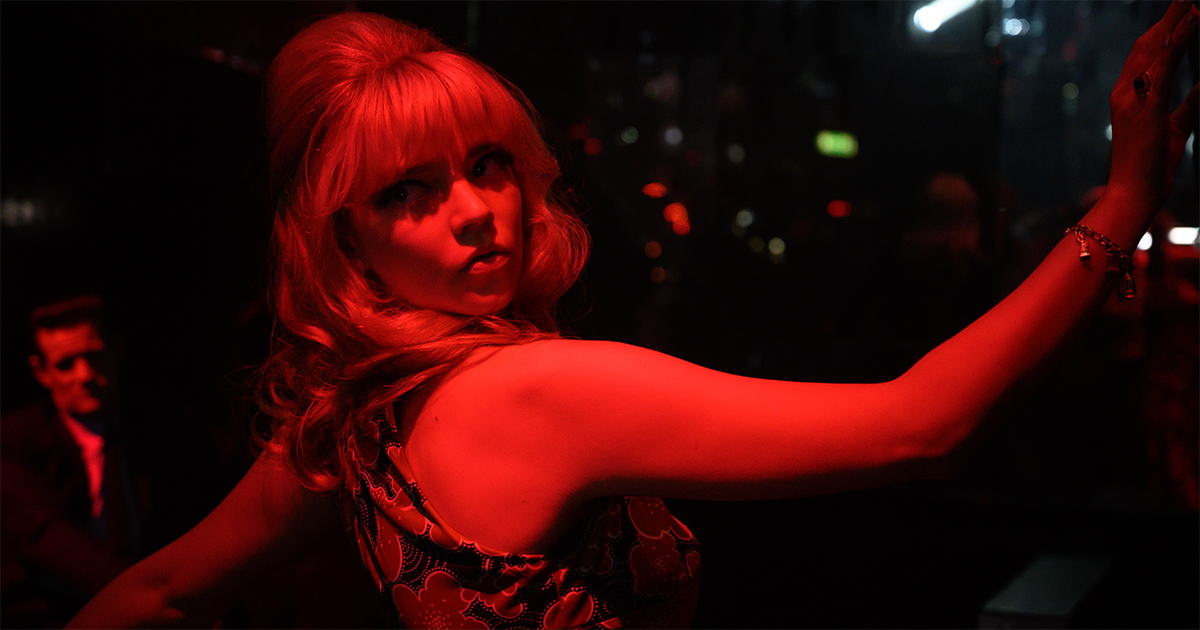
“The lights are much brighter there
You can forget all your troubles, forget all your cares, so go downtown
Things will be great when you’re downtown
No finer place for sure downtown
Everything’s waiting for you…”
Growing up in the home counties of the UK with an interest in film and television meant you were already seduced by the idea of Soho, “where all the films and music was made.” Petula Clark sang “Downtown” to you like a siren from Greek mythology, enticing you to come to where the “lights were brighter.” The undercurrent of danger made it even more exciting.
But Soho itself had warned us about its darkness. John Schlesinger’s 1965 movie Darling saw Julie Christie’s fashion model flame out. But Edgar Wright was ploughing a different furrow. He wanted to raise a glass to British directors Michael Powell and Alfred Hitchcock and, like James Wan in Malignant, the likes of Dario Argento and Mario Bava.
READ MORE: Director James Wan is All in for the Scares With “Malignant” (NAB Amplify)
So you’re left with a film that is part psychological thriller with increasing horror notes and old-fashioned jump scares, just in time for Halloween. The film is due out on October 29 after the now usual delays from last year because of the pandemic.
Last Night in Soho is Wright’s latest movie (apart from the music documentary, The Sparks Brothers) and is perhaps his twisted love letter or dark valentine to the London media district that has been his workplace for more than 25 years. The film isn’t part of any Cornetto trilogy extension, and so there’s no place for actors Simon Pegg or Nick Frost, or any of the genre-deconstruction of that series.
READ MORE: “The Sparks Brothers:” Assembling a Musical Odyssey Turned Pop Art Documentary (NAB Amplify)
“Last Night in Soho is a love letter to that specific part of London, and to a bygone age when the Rolling Stones and Princess Margaret were hanging around,” says screenwriter Krysty Wilson-Cairns. “It’s a love letter to the past, but a warning as well not to look back with too much nostalgia, or gloss over the seedy underbelly.”
The short synopsis of Last Night in Soho describes Eloise (Thomasin McKenzie), an aspiring fashion designer. She is mysteriously able to enter the 1960s where she encounters a dazzling wannabe singer, Sandie (Anya Taylor-Joy). But the glamour is not all it appears to be and the dreams of the past start to crack and splinter into something far darker.
Wright told The Hollywood Reporter how he shot in the district itself although practically it was very difficult. “All the location work is in central London. Little bits of Fitzrovia and Bloomsbury, but all the Soho stuff we shot in Soho. And in two different time periods, so we’re shooting contemporary Soho and ‘60s Soho.
“I say this, and I’m not being cocky, but in terms of what my production team, production designer Marcus Rowland, the location team and the AD team managed to pull off to shoot in real central London, transformed back into the ‘60s in some key shots, is really extraordinary.
“I only say that — and I don’t mean to blow my own trumpet — because there were several days when I was shooting those scenes when I’d come to work and see how many people were on the streets and think, I wonder if we can pull it off today, we might finally have been beaten on this film. That happened a couple of times, but we always got the shot, and it was sort of amazing when that happened.”
Shooting was halted in March last year but continued in August under COVID protocols. Wright did, however, manage to catch Soho during lockdown, when he took a small crew to document how deserted it was. “So in July, before everything reopened, we went out one night with a very small camera crew and shot lots of empty London because I thought, I don’t know whether this will ever be like this again. It was an extremely surreal experience to be standing in Piccadilly Circus without any cars on the road. So in the end credits, you’ll see some shots that were filmed in genuine lockdown Soho.”
READ MORE: Venice: Edgar Wright Details Making ‘Last Night in Soho’ During Lockdown (The Hollywood Reporter)
Ironically, but also typically, of this enforced creative break in filming, there were advantages to the lockdown. Especially nurturing the rhythm of the edit. “I’d be cautious to say that the pandemic brought anything good, but one thing that happened was that we went on a break from editing the movie. It’s rare to have a bit of distance and come back with solutions.
“So there was that odd thing where I hadn’t seen [editor] Paul Machliss in the edit for six months, and I’d come back and be like, ‘Hey, I was watching this Robert Bresson film, and he edited this bit like this.’ So you’d come up with solutions to things you didn’t have before. And the additional filming we did last August was again quite emotional because we were one of the very first films to come back. I think it was just us and Jurassic World: Dominion, and we were both shooting in Pinewood.
“Everybody there on the crew had obviously not been working for six months, so it was a really powerful feeling, and I can’t really describe it. Also, there was this great weight of responsibility because you felt that everyone was looking to your production to see if it was going to work. I think my main terror was that Focus [Features] would go the opposite way and say, ‘We don’t know when we’re going to be back, so let’s just wrap up what you’ve already got.’ And to their credit, they did not do that.”
The dual dialogue of the narration in Last Night in Soho was based on Wright scolding a specific genre of dramas from the 1950s and 60s. In an interview with MovieMaker Magazine, Wright explains that “ there’s a big sort of subgenre of films, especially British films, about young girls going to London. And having the temerity to want to do well in show business and being roundly punished — usually by a male writer.”
To prepare for Soho, Wright says he watched more dramas than horror. He even provided the cast with a list of 50 movies they could watch to prepare for their roles. Thomasin McKinzie, who plays Eloise, says, “It was educationally really great because it exposed me to things that I hadn’t ever watched before.”
For the film itself, Wright wanted to show both sides of these films, the modern day take and the past versions. He compares the past version to The Flesh Is Weak, where Anya Taylor-Joy and Matt Smith share a relationship similar to the one in the British film. For Taylor-Joy and Smith, watching the films was a different experience.
“It’s sort of a different way of acting in those films… and I wanted to kind of subtly show that, which I think they did brilliantly. It’s almost like Matt and Anya were approaching it from the idea of movie actors at the time. Whereas Thomasin, in the modern-day, is adopting a more naturalistic approach,” Wright notes.
LIGHTS, CAMERA, ACTION! SPOTLIGHT ON FILM PRODUCTION:
From the latest advances in virtual production to shooting the perfect oner, filmmakers are continuing to push creative boundaries. Packed with insights from top talents, go behind the scenes of feature film production with these hand-curated articles from the NAB Amplify archives:
- Savage Beauty: Jane Campion Understands “The Power of the Dog”
- Dashboard Confessional: Ryusuke Hamaguchi’s “Drive My Car”
- “Parallel Mothers:” How Pedro Almodóvar Heralds the New Spanish Family
- “The Souvenir Part II:” Portrait of the Artist As a Young Woman
- Life Is a Mess But That’s the Point: Making “The Worst Person in the World”
But when it comes to the films Soho is inspired from, Wright says “it felt like it was like a stinging rebuke against women’s liberation, this idea of, How dare you want to come to the city and make it big? And there’s many, many films like that, which I thought was so interesting and quite dark in itself, in terms of, Who are these films for?”
READ MORE: Edgar Wright on the Scoldy Subgenre That Helped Spark Last Night in Soho (MovieMaker)
In an interview with Little Black Book, Wright recounts how the story for Last Night in Soho came about. “It might not seem that way from the subject matter, but it’s quite a personal movie in a lot of ways.” From being inspired by his own experiences, his family’s, and working in Soho for 27 years, all these moments are what inspired the film.
While working in Soho, Wright acknowledges the change it atmosphere from day to night. “A place that’s fun and social, suddenly becomes quite nervy, taking on this dak energy. And the later at night it gets, the more you feel it. There’s definitely a change of chemistry in the air. And I’m one of those people that can’t walk around a city and not think about it’s past; both the good side of its cultural history but also the darker side and its shadows of the past that loom very large.”
When it comes to shooting the film, Wright and his team used both celluloid film and digital. With about 75% on film, it was a practical decision and way to save money while filming. “The blend between the two is pretty seamless anyway so we shot on a number of formats: spherical, anamorphic and 35mm, with night exteriors shot on digital,” he says.
Any issues in directing the film, wright admits, were problems he made himself. For instance, the repeating light outside of Eloise’s room created a sequence needed for continuity. Filming in Central London also created some of its own issues. Wright explains that, “even if you have road closures, or even if you’ve dressed a scene with period cars and period extras, you still have to keep the public at bay, and we kept having to ask them nicely not to walk through the shot.”
But at the end of the day, a personal highlight for Wright while filming is “when you achieve a take where it works, that’s a really good feeling. Even just on the monitor when you’re watching it back is a good feeling.”


